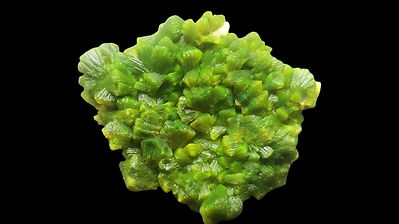Why are some rocks radioactive?
Not all rocks are the same. Some quietly give off tiny amounts of invisible energy, radiation, because they contain naturally radioactive elements like uranium, thorium, and potassium-40. These elements have been part of Earth since the very beginning, long before humans even existed.



What Does “Radioactive” Mean?
Radiation can be a life long study but in simple terms, an atom is like a tiny solar system: a dense center called the nucleus, surrounded by orbiting electrons. If that nucleus has too much energy or the wrong mix of protons and neutrons, it’s unstable. Over time, it releases energy to become stable. That process is called radioactive decay.
There are three main types of radiation:
-
Alpha (α): Heavy, positively charged particles made of two protons and two neutrons. They move relatively slowly and can be stopped by a sheet of paper or even a few centimeters of air.
-
Beta (β): Fast-moving electrons or positrons. They’re much lighter than alpha particles and can pass through paper but are stopped by a few millimeters of plastic, glass, or thin metal like aluminum.
-
Gamma (γ): High-energy electromagnetic waves (not particles) similar to X-rays, but more powerful. They can travel through rock and several centimeters of lead or steel, which is why they require dense shielding to block.
The “speed” of decay is measured by its half-life, the time it takes for half of a sample to change into something else. Some half-lives are seconds, others billions of years.
Where Does Uranium Come From?
Uranium didn’t start here on Earth. It was made in the hearts of exploding stars, supernovae and neutron-star collisions, billions of years ago. When the dust from those cosmic explosions formed our solar system, uranium became part of the mix.
As the Earth cooled, uranium spread through the crust but concentrated in certain places:
-
Hydrothermal veins, where hot water carried uranium and deposited it in minerals.
-
Sedimentary layers, where uranium in groundwater settled out in ancient riverbeds.
That’s how we ended up with beautiful uranium minerals like autunite (yellow-green plates), torbernite (deep green sheets), and uraninite (black metallic crystals). These are the minerals collectors prize, and the same ones that glow under UV light (mostly 365-395nm) or make Geiger counters chatter.
What Are NORMs?
NORM stands for Naturally Occurring Radioactive Material. It’s just a fancy way of saying the radioactivity was there all along, nature made it, not people.
Here are the three main natural sources of radiation in rocks:
Uranium (U) with α, β, γ radiation is typically found in Uraninite, Autunite, Torbernite,
Thorium (Th) with α, γ radiation is mostly found in Monazite, Thorite, Thorianite,
Potassium (K) with β, γ radiation is associated with Feldspar, Mica, Clay minerals.
Sometimes people concentrate these materials without realizing it, for example, during mining, oil drilling, or phosphate processing, creating what scientists call TENORM (Technologically Enhanced NORM).
Why Some Rocks Are “Hotter” Than Others
Some rocks naturally have more radioactive elements than others.
-
Granites often contain small but steady amounts of uranium, thorium, and potassium.
-
Pegmatites can host uranium minerals that crystallized from the last, mineral-rich fluids in magma.
-
Phosphate rocks and black shales sometimes trap uranium in organic material.
If you use a Geiger counter or a scintillation detector, you’ll hear more clicks near these types of rocks. Collectors sometimes use gamma spectrometers to figure out which isotopes are present, uranium, thorium, or potassium-40. The Radiacode detectors we use are able to do so!
Why Radioactive Rocks Matter
Without radioactivity, Earth would be a very different planet. The slow decay (not fusion or fission!) of uranium, thorium, and potassium deep inside the Earth keeps the planet’s interior warm, it literally powers plate tectonics, volcanoes, and magnetic fields.
So when you hold a radioactive mineral from our store, you’re not just holding a rock, you’re holding a bit of stardust energy that has been changing very, very slowly since the dawn of time.
Fun Facts
-
The oldest minerals on Earth, tiny crystals called zircons, contain uranium used to date Earth’s age, about 4.4 billion years old.
-
Bananas are slightly radioactive because of potassium-40, but you’d need to eat millions to match a uranium rock’s activity.